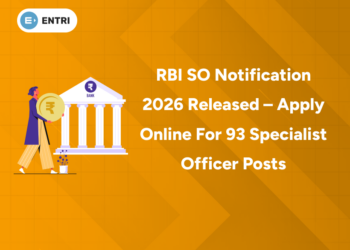Table of Contents
Effective communication plays a crucial role in today’s high-speed workplace, fostering team unity and boosting productivity. Whether you are working on a project, sharing ideas, or resolving problems, your ability to communicate clearly and respectfully will determine your success in the workplace. However, communication is about listening, understanding, and responding accordingly in various media; speaking is not the only thing. In this blog post, let’s explore how to communicate effectively at work and discuss various types of professional communications, including how to maximize your vocal and non-vocal signals, writing style, and etiquette in digital communications.
Join our Spoken English program today and communicate with ease!
Types of Workplace Communication
1. Verbal Communication
This refers to the direct communication that occurs during meetings, phone calls, or in-person interactions. It’s perfect for rapidly debating ideas, posing questions, and obtaining immediate answers. Key components of verbal communication are obviously speaking effectively and listening closely.
2. Nonverbal Communication
This covers your body language, facial expressions, eye contact, gestures, and even voice tone. Occasionally the words themselves are less significant than how you phrase something. For instance, nodding and smiling throughout a speech indicates your attentive nature.
3. Written correspondence
Written communication is everything you produce—emails, notes, memos, reports, etc. It helps to distribute knowledge that must be recalled or referenced later on. To prevent uncertainty, good writing should be free of mistakes, orderly, and unambiguous.
4. Digital Communication
This covers all technological communication: team systems like Slack or Microsoft Teams, chat apps, and video calls. For remote work, it’s particularly crucial. Excellent online communication depends on being polite, professional, and clear in digital messages.
Keys to Effective Verbal Communication
1: Which of the sentences below is grammatically correct?
- Be clear and succinct: Clearly and simply say what you intend. Steer clear of excessively complex jargon or excessive word count. This clarifies your message so others may immediately grasp it.
- Before You Talk, Think: Please take a moment to organize your thoughts before speaking. This approach keeps you on the subject and helps you avoid unintentionally straying from it. It also reveals your consideration and decency.
- Actively Listening: Good communication consists of listening as much as speaking. Focus especially on the words the other person is using. Nod, look someone in the eye, and answer in a way that demonstrates your actual listening.
- Speak in Positive Terms: Pick polite, courteous, and motivating words. Try to be courteous and encouraging even while you are providing comments or debating a matter. It strengthens relationships.
- Seek Information: Ask if you are unsure about something. Questions reveal your active interest in learning. They also help to correct misconceptions before they become more serious issues.
Spoken English Course for Guaranteed Confidence and Career Growth
Spoken English Course by Entri App: Enhance your communication skills, gain certification, and boost your career with confidence.
Join Now!Mastering Non-Verbal Communication
Communication is about how you say things without words as much as it is about what you say. Your body language, facial emotions, and tone of voice greatly influence how others perceive your message. Learning to recognize and regulate nonverbal cues will enable you to better communicate yourself and create closer bonds at work. Below are some tips to master nonverbal communication.
1. Maintain direct eye contact
Maintaining eye contact (not staring) signals that you are listening and interested in what the other person is saying; it builds trust and gets you heard and respected.
2. Use open body language
Stand or sit comfortably—don’t cross your arms or turn around. Open body language makes you look friendlier and shows that you are open to communication.
3. Check Your Tone and Face Expression
Your face and voice can convey your emotions when your words cannot. Smile when appropriate, and speak in a warm, gentle voice. It is useful to match your mood with your message.
4. Pay attention to others’ body language
Pay attention to the non-verbal signals of the individuals you’re speaking with. Are they yawning, looking confused, or shifting uncomfortably? These are signs that you can use to adjust your message or style.
How To Improve Written Communication Skills
Good writing for business enables you to professionally and concisely present material. Excellent written communication helps others to grasp your ideas and respond appropriately whether you are writing emails, reports, or letters. Below are some basic techniques to help you with your writing:
1. Use proper grammar and punctuation
Grammatical or punctuation errors can alter the meaning of your message or project unprofessionalism. Please take a moment to write carefully and utilize grammar or spell-check tools to identify any errors.
2. Be Short
Take a direct and concise approach. Choose straightforward language and steer clear of introducing too many details that can perplex the reader. One will find it simpler to comprehend and grasp a brief and straightforward message.
3. Organize Your message
Please organize your work using headings, bullet points, or short paragraphs. This feature helps the reader to rapidly find what they need by scanning the material.
4. Proofread Before Corresponding
Always review your message before you send it. Search for errors, confusing statements, or absent facts. A brief review can prevent errors and misunderstandings.
5. Customize Your Voice
Change your tone—formal or casual—based on the person you are writing to. For instance, you might contact your manager in a more businesslike manner and converse politely with a colleague.
Join our Spoken English program today and communicate with ease!
Digital Communication Etiquette
Emails, chats, and video calls abound in the workplace of today. Good digital etiquette is therefore critical. People view you differently depending on how you interact online. Below are some basic guidelines to maintain professional, polite, and transparent digital communication:
1. Respond right away
Try to reply to communications within a sensible period. Even a brief “Got it, will get back to you soon” indicates to the sender you have read their communication and are working on it.
2. Show Courtesy in Group Conversations
Keep group messages centered on employment issues. Steer clear of interrupting ongoing discussions with unrelated subjects and of sending too many messages all at once.
3. Mute in Meetings When Not Speaking
When you’re not speaking on video conferences, keep your microphone off. This technique keeps the conference running without disturbance and helps to avoid background noise upsetting others.
4. Email clearly defined subjects
A strong subject line enables the reader to immediately understand the nature of your communication. It saves time and facilitates the later discovery of your communication.
5. Steer clear of ALL CAPS
Using all capital letters could give your writing a scream-worthy quality. Instead, highlight or bold key ideas respectfully and professionally.
Spoken English Course for Guaranteed Confidence and Career Growth
Spoken English Course by Entri App: Enhance your communication skills, gain certification, and boost your career with confidence.
Join Now!Conclusion
Teamwork and individual success depend on your skill at practicing effective workplace communication. Every interaction reflects on your reputation—whether it’s person-to-person in meetings, through business writing, or electronically with colleagues. Good communication reinforces professional working relationships, resolves misunderstandings, and makes the workplace a more pleasant and productive place. It is more than just talking; it’s listening, understanding, and responding politely and clearly. By increasing your verbal, nonverbal, written, and electronic communication capabilities, you enhance not only your team-building capabilities but also career opportunities. Remember that communication is a gift; like any gift, it works better with consciousness and practice.
Spoken English Course for Guaranteed Confidence and Career Growth
Spoken English Course by Entri App: Enhance your communication skills, gain certification, and boost your career with confidence.
Join Now!Frequently Asked Questions
Why is communication important in the workplace?
It helps avoid misunderstandings, builds strong working relationships, improves productivity, and supports teamwork.
Is non-verbal communication really that important?
Absolutely! Body language can reinforce your message or unintentionally contradict it. Being aware of body language helps in delivering consistent and confident communication.
What’s the best way to handle miscommunication?
Promptly address the issue, clarify any misunderstandings with respect, and ensure both parties have a mutual understanding.
What if I'm shy or nervous when speaking at work?
t’s normal to feel nervous, especially in meetings or presentations. Start by practicing what you want to say, and try speaking up in smaller groups first. With time and experience, your confidence will grow.
How do I communicate better during meetings?
Prepare ahead of time, take notes, listen carefully, and speak clearly when it’s your turn. Don’t interrupt others, and try to stick to the topic.











